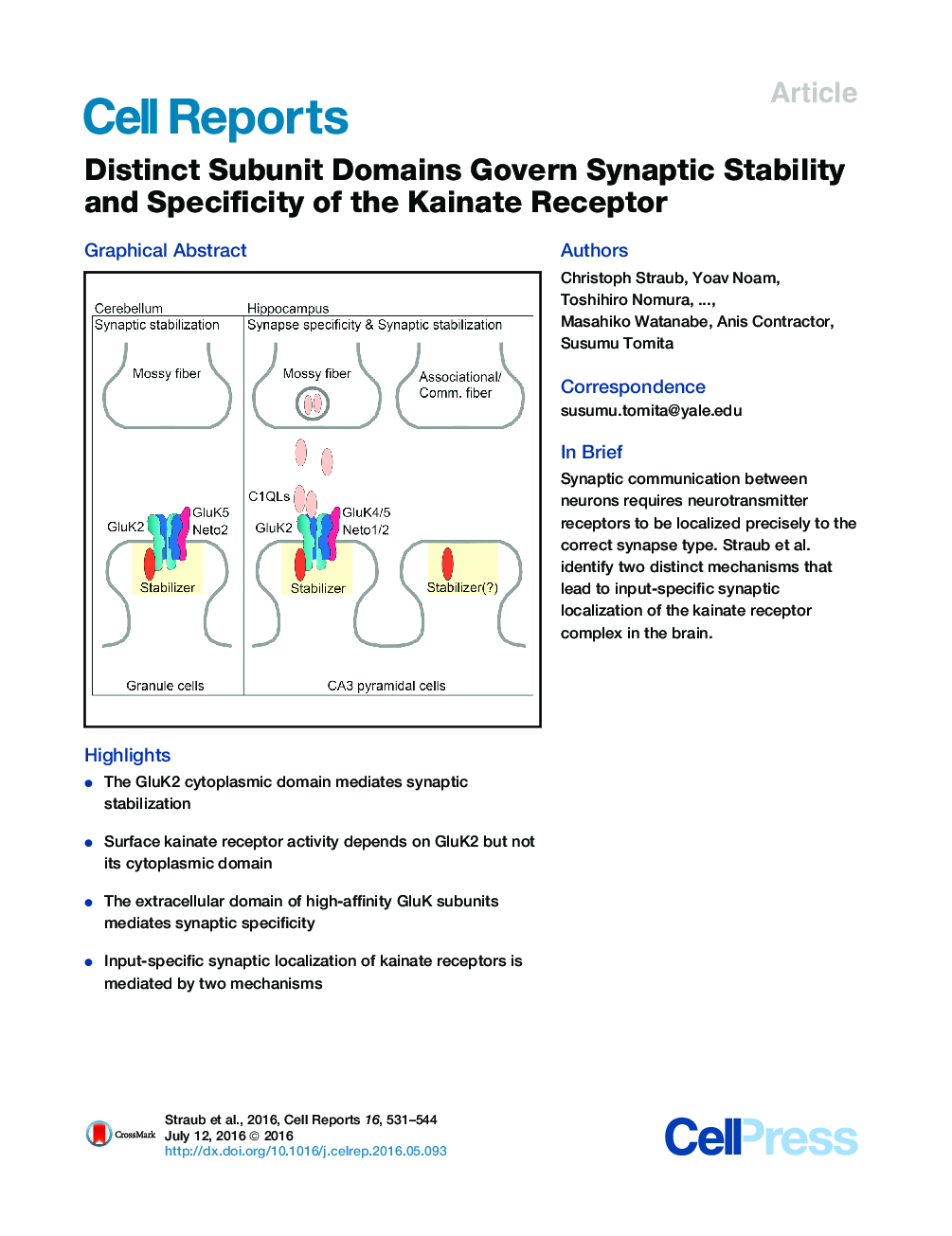| Article ID | Journal | Published Year | Pages | File Type |
|---|---|---|---|---|
| 2039153 | Cell Reports | 2016 | 14 Pages |
•The GluK2 cytoplasmic domain mediates synaptic stabilization•Surface kainate receptor activity depends on GluK2 but not its cytoplasmic domain•The extracellular domain of high-affinity GluK subunits mediates synaptic specificity•Input-specific synaptic localization of kainate receptors is mediated by two mechanisms
SummarySynaptic communication between neurons requires the precise localization of neurotransmitter receptors to the correct synapse type. Kainate-type glutamate receptors restrict synaptic localization that is determined by the afferent presynaptic connection. The mechanisms that govern this input-specific synaptic localization remain unclear. Here, we examine how subunit composition and specific subunit domains contribute to synaptic localization of kainate receptors. The cytoplasmic domain of the GluK2 low-affinity subunit stabilizes kainate receptors at synapses. In contrast, the extracellular domain of the GluK4/5 high-affinity subunit synergistically controls the synaptic specificity of kainate receptors through interaction with C1q-like proteins. Thus, the input-specific synaptic localization of the native kainate receptor complex involves two mechanisms that underlie specificity and stabilization of the receptor at synapses.
Graphical AbstractFigure optionsDownload full-size imageDownload as PowerPoint slide
